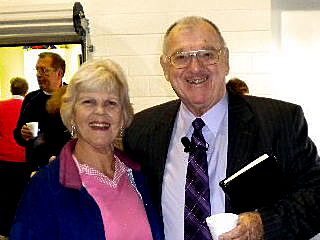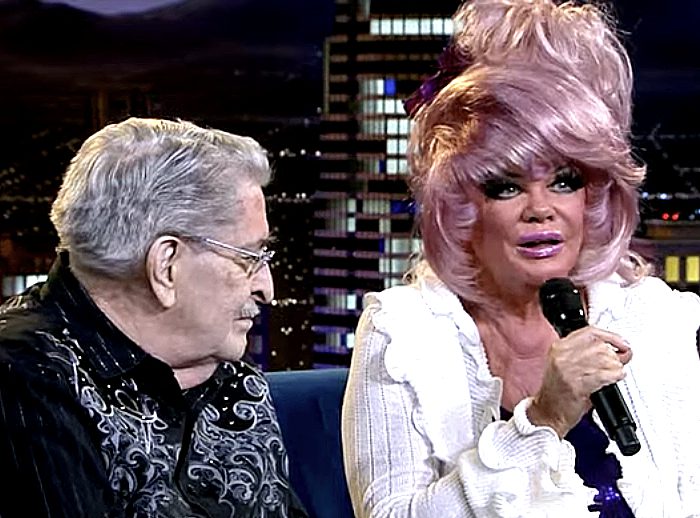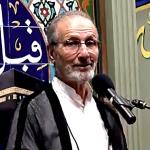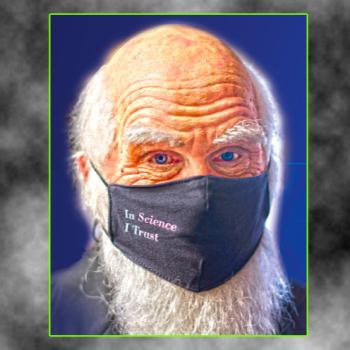LAUNCHED 20 years ago by “Christian Hebrew” Marvin Rosenthal – a convert to Christianity and an ordained Baptist minister – the Holy Land Experience in Orlando, Florida, was intended to outshine Walt Disney World.
It didn’t come close – not by a country mile. Despite reenactments of Jesus’ crucifixion and resurrection, grinning goons dressed as Roman soldiers, a miniature model of first-century Jerusalem and a stupidly named Trin-i-tee mini golf course, the expected crowds of goggle-eyed Christians never turned up to the 14-acre park in sufficient numbers to make the thing viable.

According to Christianity Today, cash infusions, cost cuts, and an outrageous $50 entry fee the park was on a wobbly financial footing from the start.
For the last few years of its existence, it had annual operating deficits of about $5 million, with no one willing to step up to cover that as a ministry cost.
Religious anthropologist James Bielo, who studies places that “materialise the Bible,” said the Holy Land Experience was arguably the most famous of the biblical replicas in the US, even though it always struggled to survive.
The ones that stay on the landscape are kind of the exception. Holy Land recreations typically pop up in a kind of visionary fit. Someone gets excited, they pour a lot of resources into it, there’s a big opening, but in five, 10, 20 years, it’s gone.
Bielo has cataloged about 50 faith-based parks that have sunk without trace, including a drive-through Bible garden, a Book of Job park, a “Golgotha Fun Park,” and a biblical history wax museum.
The Holy Land Experience officially shuttered on August 2, when it was sold to a Seventh-day Adventist health care company for $32 million.
CT says:
There is no indication the Adventists are interested in attempting their own version of a theme park.
AdventHealth has not announced specific plans for the site but said in an official statement:
It will make a significant investment in redeveloping the property to bring enhanced health care services to the community.
The company currently runs 29 hospitals in Florida, as well as health care facilities in eight other states.
Rosenthal, pictured right with an adoring fan, was raised in Philadelphia and converted to Christianity after his mother, who ran a candy store, started reading the New Testament. He saw her life transformed and wanted what she had.

After graduating from Philadelphia College of the Bible – now Cairn University– Rosenthal was ordained as a Baptist and started an independent ministry focused on end times theology and the need for Jews to accept Jesus.
In 1989, Rosenthal and his family moved to Florida and started the ministry Zion’s Hope. When Zion’s Hope sold some property to the state for the construction of a highway, Rosenthal was moved to invest the profits into a replication of the Holy Land, which would allow people to experience Israel as it was in Jesus’ time
Rosenthal told a Florida newspaper:
We hope all visitors will come and see the majesty of God. Or at least go home and dust off their Bibles.
I’ve come to appreciate how helpful it is for people not only to read about some of the great truths of the Bible, but to see some of the great places, the environments, the sounds, the touches, the smells.
Rosenthal claimed in 2001 that his park would take visitors “out of time.”
They will leave the 21st century behind and embark on a journey that is unequalled anywhere in the world. It will be an experience that is educational, historical, theatrical, inspirational, and evangelical.
The theme park cost $16 million to open, and Zion’s Hope contributed additional funds to cover expenses. Rosenthal estimated annual operating costs of more than $3 million and said he thought he needed 180,000 to 200,000 people paying, at the start, a $17 cover charge (plus $5 for parking) to make ends meet.
The grand opening received national publicity – some generated by Jewish activists who clucked that the Holy Land Experience “was designed to covert Jews.”
Irv Rubin, chair of the Jewish Defense League, compared the theme park to the Holocaust:
There are two ways you can murder Jews. Physically, like Auschwitz, and spiritually, the way of Marvin Rosenthal.
Rubin was arrested, a short time later, on charges that he conspired to bomb a mosque in California and the office of US Congressman Darrell Issa. (Rubin died by suicide in 2002 while awaiting trial in a Los Angeles prison.)
As the controversy over Rosenthal’s messianic Christianity faded, it was replaced by a clash over taxes.
Local authorities insisted the Holy Land Experience, as a theme park, should pay about $160,000 per year in taxes. Rosenthal and his attorney’s countered that it was a religious nonprofit and should be tax exempt.
The struggle continued in the courts until 2006 when then-Governor Jeb Bush signed a law that carved out an exemption for theme parks that displayed biblical manuscripts and waived admission at least one day a year.
The Holy Land Experience, which had a special exhibit with a Gutenberg Bible, a replica of Pilgrim’s Progress author John Bunyan’s jail cell (with the original key), and an $80,000 animatronic Bible translator John Wycliffe, started offering free admission one or two days per year.
Despite the tax break and about a quarter of a million annual visitors, the Holy Land Experience could not break even. It just cost more to run than Rosenthal calculated. By 2007, the park was $8 million in debt and required regular gifts from the family of Robert Van Kampen, the millionaire-investor-turned-Bible-collector who died in 1999.

The theme park was saved from its dire financial predicament by Trinity Broadcasting Network (TBN). Cofounders and televangelists Paul and Jan Crouch, above, bought the Holy Land Experience in 2007.
They planned to use it as a studio and a set for new television productions, promote the tourist attraction at little cost to Christians who watched TBN, and cut expenses to make the park financially sustainable.
In the first year, they laid off about a quarter of the staff and outsourced some of the more expensive maintenance, including cleaning and landscaping. They increased the number of visitors by about 25 percent, freshened up some of the attractions, and added new ones.
Visitors could now get their picture taken so it looked like they were walking on water with an actor portraying Jesus.
During the first TV show broadcast from the Holy Land Experience, Paul Crouch explained how it would be like a faith-based version of Universal Studios and called the theme park “our latest miracle.”
The grotesque Jan Crouch – who took on the day-to-day operation of the park as her personal project – “cried with joy until her mascara ran.”
Now that I would have paid good money to see.
Financially, however, the Holy Land Experience still required bucket loads of dosh. In 2010, TBN put more than $40 million into it. In 2011, another $23 million. In 2012, TBN stopped raising money with telethons, after much criticism of the fundraising practice, and cut support to the theme park to about $2 million per year.
At the same time, ticket sales started falling. From a height of about 250,000 visitors, it dropped to 180,000 paying adults in 2013 and then just continued to decline. Tax records show nearly $9 million in ticket sales in 2014 dropped to $8.5 million the next year, and down to $7.1 million the year after that, when Jan Crouch fell into the arms of Jesus, scaring the shit out of him.
The Holy Land Experience had long been criticised for trivialising faith to appeal to the masses. Timothy Beal, author of Roadside Religion, said:
The actual physical place lacked personality and soul.
Burke Long, author of Imagining the Holy Land, said the theme park was an example of :
Something deep in the American culture that prefers the fake to the authentic.
















